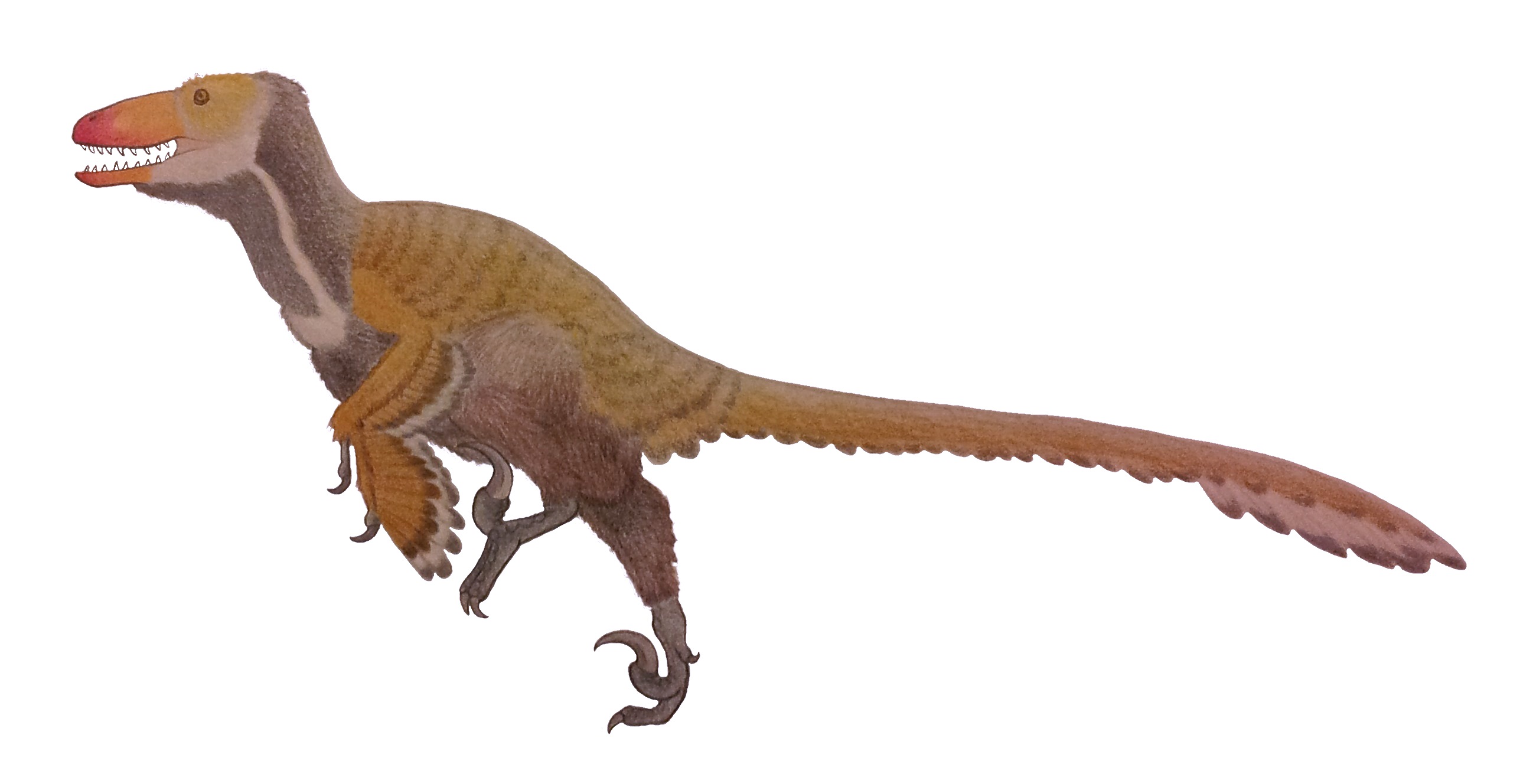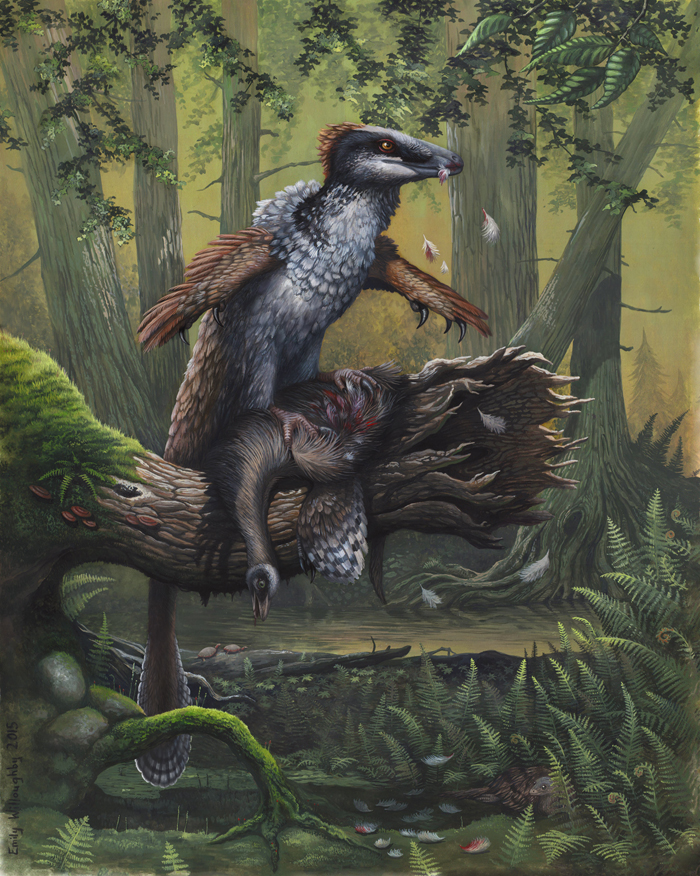As you might have noticed (if you're a dinosaur nut-case like me, anyway), that 2015 has been a great year for dinosaur-lovers! We've had more fascinating discoveries than you can shake a stick at, lots of dinosaur documentaries were aired, The Good Dinosaur is in theaters now AND last but not least, Jurassic World finally came out in theaters this past summer! I'll cover all the details of our dinosaur-filled 2015 in an upcoming article, but for now, I'd like to highlight one recent discovery that was released to us this past November. But first...
Days Till:
It is: 9 days till Christmas
It is: 16 days till New Year's
It is: 20 days till My Birthday
It is: 33 days till Martin Luther King Jr. Day
In the Spotlight:
As I'm sure many of you know, Star Wars: The Force Awakens is coming out this Friday. Unlike Jurassic World, we haven't had to wait 13 years for a sequel, but it should still be a pretty cool movie. I look forward to watching. When you see it, be sure to leave a comment down below and express how you liked the movie. In the meantime, here's the trailer:
Topic of the Week by Christian Ryan
 |
| The newly discovered Dakotaraptor (seen here as a skeleton) is truly an impressive find! (Wikimedia Commons) |
The Hell Creek Formation, located in the badlands of Montana, North and South Dakota and Wyoming, represents a once-thriving ecosystem of the world before the Genesis Flood around 4,350 years ago, when the entire environment was inundated by floodwaters that swept away and buried countless animals and plants and preserved them. Today, the Hell Creek Formation yields a number of the more popular dinosaurs that lived in this environment, such as Triceratops, Ornithomimus and Edmontosaurus. And of course, these dinosaurs were hunted by the most famous dinosaur of all, Tyrannosaurus rex! For almost a century, T. rex was the sole apex predator that dominated the Hell Creek ecosystem, but this soon changed upon the discovery of an all-new dinosaur: a raptor, called Dakotaraptor steini.
 |
| The Hell Creek ecosystem would have been a lush, floodplain-like environment. (Wikimedia Commons) |
Uncovered in northwestern South Dakota in 2005, Dakotaraptor's discovery is a unique one. Before, the 40-foot long, 7-9 ton T. rex was the only other apex predator found in the region. This seemed strange to paleontologists, because in both modern ecosystems and ecosystems of the pre-Flood world, there are always large, medium and small-sized predators. While T. rex fossils have been found in Hell Creek since the late 1800's (though the dinosaur wasn't officially named until 1905) in relatively great abundance, all scientists knew of other Hell Creek predators came from scattered and broken teeth. No bones, claws or skulls. Just the teeth. It was only in 2013 that these teeth were found to belong to a turkey-sized, recently discovered dromaeosaur called Acheroraptor. Why were there no medium-sized predators in this ecosystem? This all changed in 2015 when paleontologist Robert Depalma, curator of vertebrate paleontology at the Palm Beach Museum of Natural History, and his research team, and several other paleontologists including Dr. Peter Larson, Dr. Larry Dean Martin, and Dr. Robert Bakker, finished and published their study on October 30th on the raptor leg and arm bones, tail vertebrae, teeth and wishbone unearthed in 2005. They realized they had found a new species of raptor.
 |
| Dakotaraptor steini was 16-18 feet long, stood up to nine feet tall and weighed about 500 pounds. (Wikimedia Commons) |
 |
| Dakotaraptor was about the size of the raptors in Jurassic World. ("Dakota raptor scale mmartyniuk" by Matthew Martyniuk - Own work) |
 |
| Dakotaraptor had a huge, sickle-shaped claw on each foot for making devastating wounds in its prey. (Wikimedia Commons) |
Evolutionary scientists are especially excited by the discovery of Dakotaraptor because they found tiny bumps that they interpreted to be quill knobs on one of the creature's forearms. In birds, quill knobs are the attachment points for flight feathers. A similar claim was made in 2007 when scientists allegedly identified quill knobs on a Velociraptor forearm. Evolutionists are eager to use evidence like this to try and prove the theory that dinosaurs evolved into bird. There are several problems with this idea, however, many of which we have covered before. In addition to these problems, these bumps are not necessarily quill knobs and may in fact be attachment points, not for feathers, but connective tissues, as evolutionary paleontologist Darren Naish pointed out in his 2010 blog post regarding another theropod called Concavenator. In his blog article, he also brought up the fact that quill knob-like bumps have been found on the bones of mammals too, and mammals clearly do not sprout feathers. This of course doe not mean Dakotaraptor and other dinosaurs like it weren't feathered; the concept of feathered dinosaurs is not unbiblical, though it is unscientific until actual dinosaurs, with actual feathers are discovered. They would merely be dinosaurs that God created with feathers, like He created all the other land animals on Day 6 as described in Genesis chapter 1.
 |
| Was Dakotaraptor a feathered dinosaur? While feathered dinosaurs aren't unbiblical, there is not enough evidence to support this claim. (Wikimedia Commons) |
 |
| Perhaps Dakotaraptor fought with juvenile T. rex for food. (Wikimedia Commons) |
 |
| Dakotaraptor was a lethal predator! (Wikimedia Commons) |
 |
| Dakotaraptor was one of the most deadly predators ever to roam the Hell Creek ecosystem. (Wikimedia Commons) |
Disclaimer: The images above are not my own unless otherwise indicated. If you own one of the above images and want it removed, please notify me via my email.
References:
www.phys.org/news/2015-11-dakotaraptor-hell-creek-formation-lethal.html
www.prehistoric-wildlife.com/species/d/dakotaraptor
www.icr.org/article/9024
www.phenomena.nationalgeographic.com/2015/11/25/did-dakotaraptor-really-face-off-against-tyrannosaurus
Jurassic Fight Club: ep. 8 Raptor's Last Stand
www.wikipedia.org/wiki/dakotaraptor
Thank you for taking the time and writing this post. Great help for me!For More info Get in Touch withClipping path serviceThanks For You Sharing.
ReplyDelete